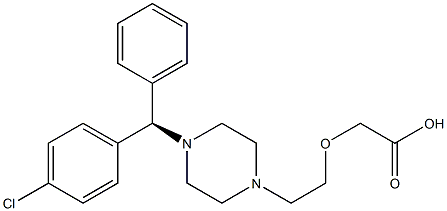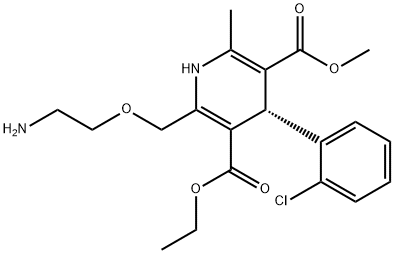Levocetirizine , 10mMinDMSO , 130018-77-8
CAS NO.:130018-77-8
Empirical Formula: C21H25ClN2O3
Molecular Weight: 388.89
MDL number: MFCD04112703
EINECS: 1312995-182-4
| Pack Size | Price | Stock | Quantity |
| 1ml | RMB559.20 | In Stock |
|
| others | Enquire |
PRODUCT Properties
| Melting point: | 205-208°C (dec.) |
| Boiling point: | 542.1±45.0 °C(Predicted) |
| Density | 1.237±0.06 g/cm3(Predicted) |
| storage temp. | Sealed in dry,2-8°C |
| solubility | DMSO: 78 mg/mL (200.57 mM);Ethanol: 78 mg/mL (200.57 mM) |
| pka | 3.46±0.10(Predicted) |
| form | Solid |
| color | White to off-white |
| Water Solubility | Water: 78 mg/mL (200.57 mM) |
| BCS Class | 3 |
| CAS DataBase Reference | 130018-77-8(CAS DataBase Reference) |
Description and Uses
The (R)-enantiomer of the second-generation antihistamine cetirizine, levocetirizine, was first introduced in Germany for seasonal allergic rhinitis (including ocular symptoms), perennial allergic rhinitis and chronic idiopathic urticaria. The dihydrochloride salt can be prepared in four steps from optically active 4-chlorobenzhydrylamine obtained by resolution of its racemate with (+)-tartaric acid. Levocetirizine (eutomer) is a 2-fold more potent H1 antagonist than cetirizine whereas the other enantiomer (distomer) is 10-fold less potent compared to levocetirizine. Pharmacodynamic studies on healthy volunteers showed that compared to cetirizine, half the dose of levocetirizine (5 mg) was necessary to obtain similar inhibitory effects in the skin test of histamine-induced wheal and flare as well as on histamine-induced nasal congestion and nasal resistance. There was no evidence of chiral inversion of levocetirizine in vivo in several species including human. The daily dose of drug is rapidly and extensively absorbed in human. Interestingly, its volume of distribution (0.41 kg/L) is smaller than that of the distomer (0.60 kg/L). The low volume of distribution is considered as favorable for an antihistamine both in terms of efficacy and safety. Due to its high metabolic stability and lack of effect on the activities of the major CYP isoenzymes, levocetirizine is unlikely to cause interactions with other administered drugs. No clinically relevant effect on electrocardiograms of healthy volunteers was detected.
Labeled cetirizine, intended for use as an internal standard for the quantification of cetirizine by GC- or LC-mass spectrometry.
Safety
| Symbol(GHS) |  GHS07 |
| Signal word | Warning |
| Hazard statements | H302-H315-H319-H335 |
| Precautionary statements | P261-P305+P351+P338 |
| HS Code | 29335990 |


![(S)-6-Phenyl-2,3,5,6-tetrahydroimidazo[2,1-b]thiazole](https://img.chemicalbook.com/CAS/GIF/14769-73-4.gif)


